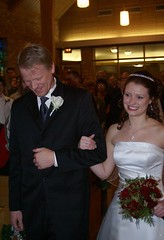Through a room mix-up (my fault) I was about 10 minutes late to this session, so I’m jumping in without a lot of set-up. I’ll plan to put it in context later.
Chris Heuer – The blog is the platform to create media. All companies are media companies. In developing the editorial calendar, look at the SEO plan and the keywords you want to own, and cover content. Understand the power of access; you have the ability to provide the “official” voice.
Bill from Intel – says a really big company can perhaps wait and monitor blogs instead of diving in, but for a second-tier competitor it’s a huge opportunity to have a voice much bigger than they would “deserve” from their relative place in the market.
Q: What are the top three reasons to blog? What are company objectives?
A: Cost of not doing it, and not having a voice in the conversation. Efficiency of marketing communications. Brand value. Connecting with people who care. The brand with the best storytellers wins. It’s also great for SEO. The market intelligence you get is the most raw, unfiltered information about yourself and your competitors.
Blogs provide brand advocates a way to speak out about how they feel about the product, not what the company is telling them to say. We’re not “using” customers, we’re empowering them. Not “leveraging.” The language is important because it can reveal a mindset that is antithetical to the social media world.
Companies don’t have to be in a glamorous line of business to benefit from social media. Fiskars scissors has “Fiskateers” for its word-of-mouth program. Intel has identified 50-100 bloggers who are most passionate about its products. BlendTec has the Will it Blend series. If those can become interesting, any product can…with some creativity.
Cara from H-P suggested linking to blogs that talk about your subject of interest. The more you help bloggers’ voice to be heard, the more likely they are to write favorably about you.
You don’t necessarily need to have a blog to engage in the blogosphere. Commenting as an employee (always being transparent about your identity) in posts that are about your company.
Companies could consider having a directory of employee blogs that is linked to from the company blog. H-P has online, self-paced mandatory training for its corporate bloggers. Refresher on standards of business conduct. H-P is seeing more of its leaders set the example by starting their own blogs and encouraging other employees to do likewise.
Intel has bought video cameras for all of its PR offices, telling people to take the cameras to press conferences and events. Intel created a contest on who could get the most views on their videos. One employee got 85,000 views for his video and won bragging rights over a colleague who got only 500.
It’s important to look at social media tools for what they can do, and how you can adapt to your business goals. For instance, Dell uses Twitter for its Dell Outlet to sell refurbished units. They immediately sell out. Twitter’s 140-character limit also can be used to help focus your message. It’s a good way to impose discipline.
We closed by asking participants to list their favorite blogs. Here they are:
- Word Wise
- TechCrunch
- Mashable
- TechDirt
- Boing Boing
- Mad Dog Blog
- BuzzMachine
- Jeremiah Owyang
- ReadWrite Web
- Marketing Pilgrim
- TechMeme
- Soxaholix
- Curt Schilling’s blog
- BlogHer
In honor of the presidential primary season, here are some political blogs (two from each side):
I know I missed a lot, so will appreciate any additional comments people may have. What points did you think were most important?


